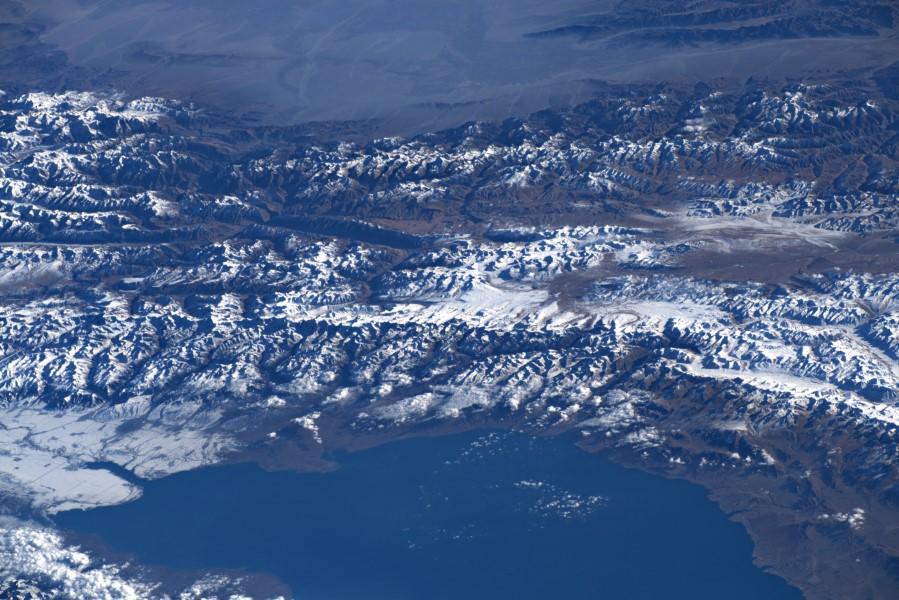[:ja]ルカ・パルミタノ宇宙飛行士がISSから撮影したキルギスのイシククル湖です。

イシククルは数少ない古代湖の一つで、天山山脈の北、キルギスの北東に在る内陸湖で、イシク湖とも呼ばれます。長さ182km、幅60km、最大深度668mで琵琶湖の9倍の大きさです。標高は1,606mという高地にあり、周囲から流れ込む河川は存在しますが、イシククルより流出する河川は認められません。塩分濃度は0.6%と比較的低いにも拘らず、冬でも湖面は凍らないのですが、これは湖底から温泉が湧き出ているためという説があります。透明度は20mを超えます。
地上の様子はこちらです。

参考文献: Luca Parmitano’s Tweet
地球俯瞰画像を見る: LiVEARTH
[Earthview Wonders] No.933: Issyk-kul, Kyrgyzstan🇰🇬
Astronaut Luca Parmitano captured from ISS Issyk-kul (Lake Issyk), Kyrgyzstan.

Issyk-Kul is an endorheic lake in the northern Tian Shan mountains in eastern Kyrgyzstan. It is the seventh deepest lake in the world, and the second largest saline lake after the Caspian Sea. Issyk-Kul means “warm lake” in the Kyrgyz language; although it is surrounded by snow-capped peaks, it never freezes. About 118 rivers and streams flow into the lake; the largest are the Djyrgalan and Tyup. It is fed by springs, including many hot springs, and snow melt. The lake has no current outlet, but some hydrologists hypothesize that the lake’s water filters deep underground into the Chu River. The lake water’s salinity is approx. 0.6% – compared to 3.5% salinity of typical seawater.
The local scenery on the ground is as follows.

Reference: Luca Parmitano’s Tweet
See earthview photo gallery: LiVEARTH[:en]Astronaut Luca Parmitano captured from ISS Issyk-kul (Lake Issyk), Kyrgyzstan.

Issyk-Kul is an endorheic lake in the northern Tian Shan mountains in eastern Kyrgyzstan. It is the seventh deepest lake in the world, and the second largest saline lake after the Caspian Sea. Issyk-Kul means “warm lake” in the Kyrgyz language; although it is surrounded by snow-capped peaks, it never freezes. About 118 rivers and streams flow into the lake; the largest are the Djyrgalan and Tyup. It is fed by springs, including many hot springs, and snow melt. The lake has no current outlet, but some hydrologists hypothesize that the lake’s water filters deep underground into the Chu River. The lake water’s salinity is approx. 0.6% – compared to 3.5% salinity of typical seawater.
The local scenery on the ground is as follows.

Reference: Luca Parmitano’s Tweet
See earthview photo gallery: LiVEARTH[:]